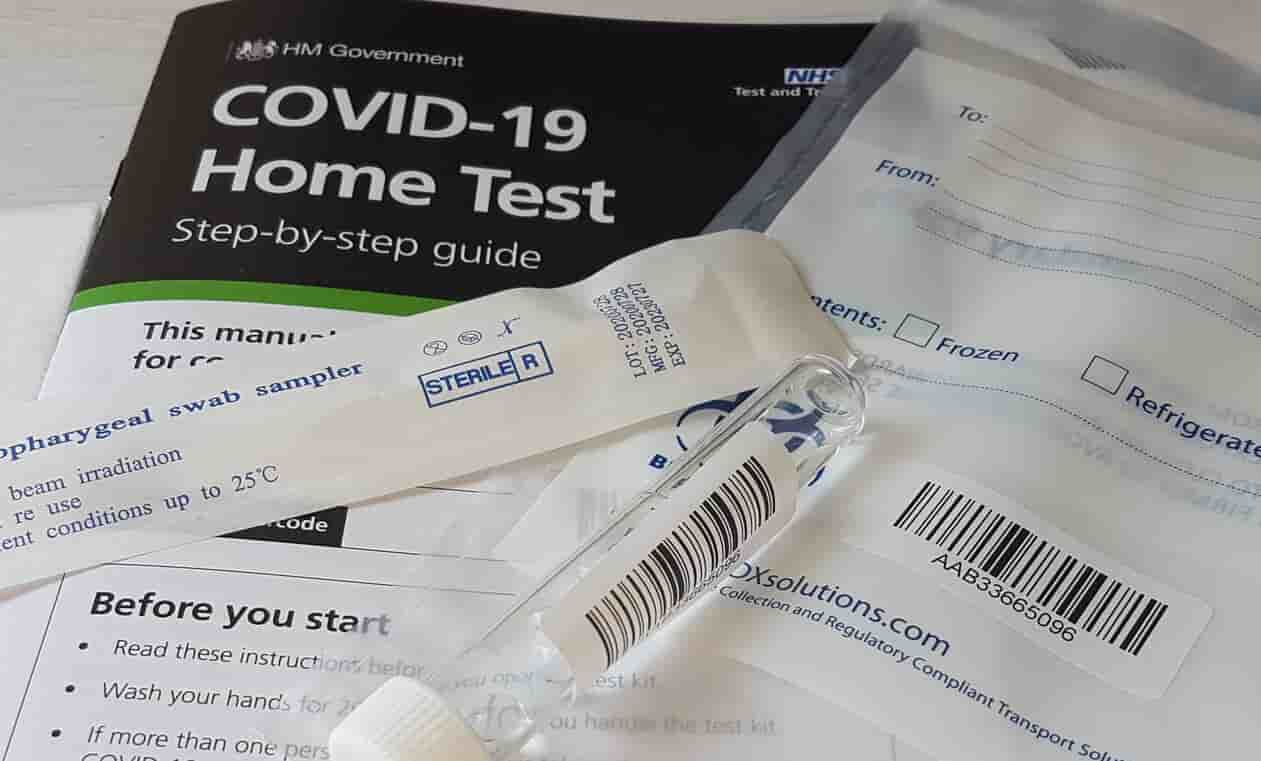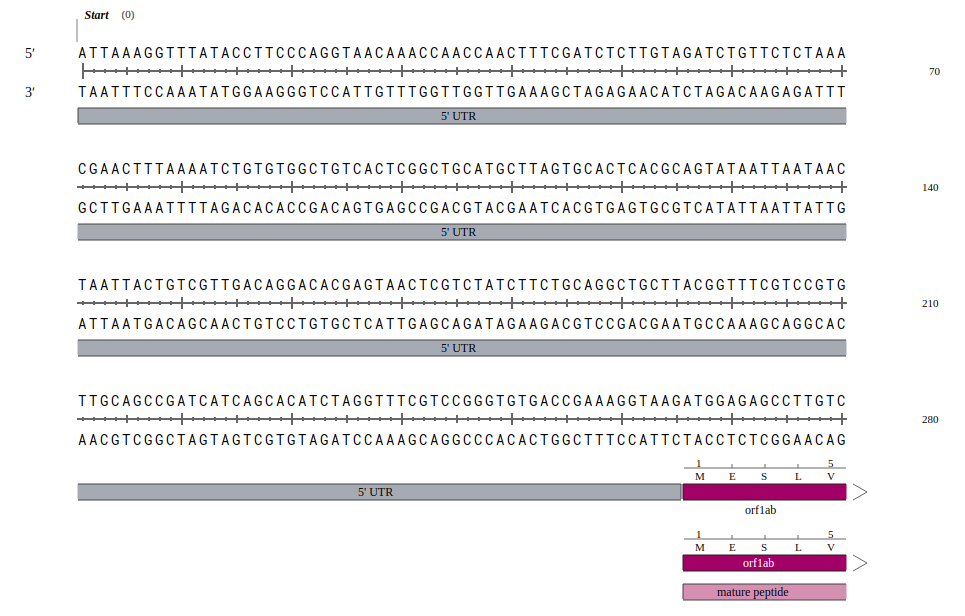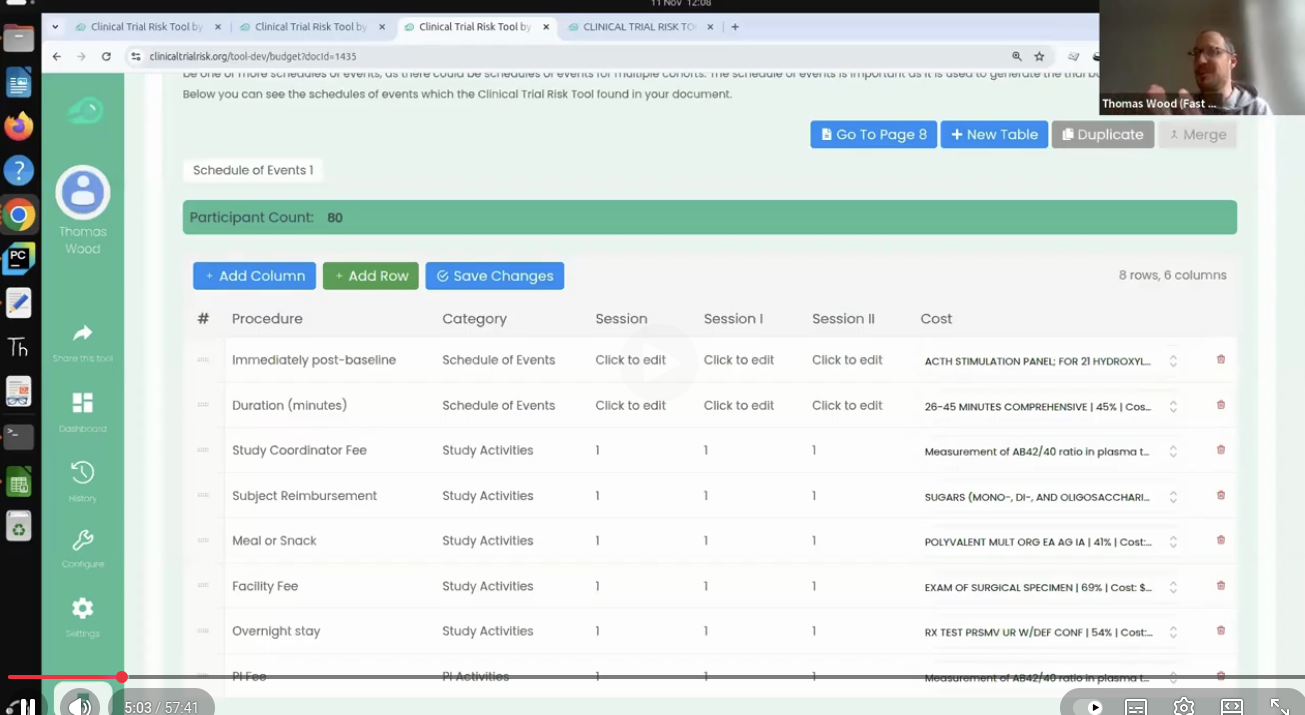
Artificial intelligence is now affecting every area of our lives. From the self-driving cars that increasingly populate our roads, to the virtual assistants that live in our phones (and have spelt the end of anyone naming their child Siri or Alexa ever again). Nobody can question that, so far, AI has yielded a positive and far less apocalyptic effect on humanity than the killer-robots of Hollywood initially had us believe.
One industry looking to capitalise on the benefits of AI is pharmaceuticals, where its uses and possible implementation almost seem unlimited. Healthcare in general has already unearthed a cavernous depth of application for AI within the sector, from CT scans that can be read by deep learning algorithms, to natural language programming that can analyse vast quantities of unstructured data in electronic health records for quicker patient diagnosis.
The COVID-19 pandemic has shown itself to be an unexpected testing ground for AI to prove its present-day capabilities in the pharmaceutical industry. The hunt for new compounds to develop a vaccine, and mapping of the virus’ genetic sequence so we can understand it better are all tasks that AI is well-purposed for: large amounts of information that need swift, iterative processing as well as the ability to discern particular patterns from the data.

A COVID-19 antigen testing kit provided for free to UK residents by the UK’s National Health Service.
Months of global lockdown have passed with no sign of a vaccine in sight. Of course, this does not mean AI is failing in any way, but it does make the question all too pertinent: what exactly is the current status of AI within the pharmaceutical industry today? What kind of impact is it making right now, and what can we expect in the future? Current utilisation aside, it’s important to consider what the human and societal implications will be: is this something that we should welcome into our lives with open arms, or will Hollywood wonder how it ever managed to forecast the future so accurately?

Dr. Edward Feigenbaum, founder of the forward-looking DENDRAL programme, one of the first projects to use AI in pharma
Artificial Intelligence and pharmaceuticals go back further than we might have thought. Their earliest coupling can be traced back to the 1960s and a research project at Stanford University called DENDRAL. The study combined the use of an expert system (essentially a computer program that uses cognitive computing and artificial intelligence to solve complex problems) with chemical analytics. By hypothesising a substance’s molecular structure, DENDRAL was able to identify unknown organic materials1 far quicker than before.
It is within the last two decades however that we have seen major advancements in machine learning, and by extension AI’s use in pharmaceuticals. Machine learning forms the basis of artificial intelligence in practice, as it is the means by which a computer program “teaches itself” automatically without the need to be programmed by a human in order to make certain non-script advances. The vastly improved power of processing units over the last twenty years has resulted in a huge performance increase for deep learning in pharmaceuticals, allowing the computer algorithms through which AI works to develop rapidly.
This improvement in machine learning has enabled AI to understand the world much in the same way we do, with the development of artificial neural networks and natural language processing enhancing its ability to create, analyse and make sense of text. This is what allows AI today to comb through volumes of data and research, and identify hidden patterns that might be the key to unlocking the next great drug discovery.
With the leaps and bounds that have been made, there are many examples of AI’s use in pharmaceuticals today, giving us a glimpse of the human and societal impact it could bring.

The cosmologist Stephen Hawking, who suffered from ALS
The primary example of AI adoption is mostly within the early stages of the drug discovery process. Take for instance ALS or Lou Gehrig’s disease. This is a devastating neurological disorder that currently has only limited options for therapy, and no cure.
However, one AI startup called BenevolentAI has identified a promising new therapeutic for ALS by mining mountains of data held in clinical trial data and academic studies. It was able to identify molecules that although previously failed in other clinical trials, could be repurposed into new compounds with a higher probability of tackling ALS.2
Fast Data Science - London
Another inspiring example is that of the San Francisco-based startup Atomwise, who developed a convolutional neural network-based algorithm called AtomNet, which was able to learn some basic organic chemistry without ever being taught the rules, and which identified an important candidate molecule for the fight against Ebola.
But it’s not just within drug discovery that AI can be of invaluable assistance. It can also improve diagnosis in Alzheimer patients, with an earlier diagnosis potentially being the key to unlocking more effective treatment before the condition is too far gone. Although it’s a far-reaching and well-known mentally debilitating condition, Alzheimer’s disease currently has no treatment. One of the main obstacles to studying Alzheimer’s disease according to clinicians is that patients are diagnosed too late in the process. However, AI can help to achieve earlier detection by analysing patterns in a person’s speech, and identifying subtle traits of cognitive decline characteristic of an Alzheimer’s diagnosis. These could include replacing proper nouns with pronouns, or slightly hesitating between words. Certain companies are using AI to analyse speech patterns that can identify patients faster, get them into trials earlier and begin the therapy process quicker.
AI also has a practical application for pharmaceutical companies that can not only save time, but also money, potentially leading the way to cheaper drugs. AI has been adopted for help in the clinical trial process, which is always the most time-consuming and costly endeavour in the search for a workable treatment.
Findings in a 2016 report revealed that 18% of cancer trials between 2000 and 2011 by the US National Cancer Institute’s National Clinical Trials Network failed to recruit even half the number of candidates necessary for an effective study. Using the natural language processing power mentioned earlier, algorithms can search doctors’ notes, pathology reports, and even social media to identify patients seeking treatment and suitable to enter a trial. For the development of a niche product, the clinical trial process can cost up to $600,000 per day, and up to $8 million per day for a blockbuster medical product, so any time saved significantly preserves the opportunity cost.4
From a social standpoint the initial outlook seems bright, and on the face of it, AI in pharma should lead to improved patient care by treating the sick with medicines developed to be more effective and more targeted to the specific condition for which they suffer from (and with fewer side-effects). Not only that, but in times such as now when a pandemic has swept across the globe and every day without a functioning cure is another hundreds of thousands infected, AI has demonstrated the speed it can bring to the vaccine process. COVID-19’s genetic makeup was sequenced within days giving scientists valuable insights into its genome.

The first few base pairs of the COVID-19 genome. Source: snapgene.com
Even just back in 2003, the sequencing of the SARS coronavirus outbreak took three months. The world we live in today is one in which pandemics can spread far wider and quicker than they might have in the days before commercial travel, and as such it’s important that the human race is able to create new medicines and vaccines at a commensurate speed, if not quicker; AI will no doubt play a vital role in this area.
Indeed as the drug discovery process becomes quicker and more automated, together with more successful hit-rates that decrease the chance of failure, drugs should be cheaper to get to market, potentially making heath care more accessible to all. Having to make the decision between personal health and financial health is never a choice a person should have to make, and this current reality highlights a widening social disparity prevalent in many first world countries. Indeed it’s been proven that giving people access to the drugs they need leads to healthier populations that in turn result in stronger economies. That process itself is cyclical, with stronger economies contributing to a healthier population, and so on.
Perhaps the biggest benefit however, and one perhaps currently only evident in the minds of science fiction writers (but hopefully not too far away) is that AI could lead the way to transformative advances in medicine that relegate the chronic conditions and terminal illnesses of today into the chapters of the past. The old adage remains: “prevention is better than cure”, and with AI, medical treatment could well go from a reactive model of care to a preventative one that reshapes society.
There are always two sides to every coin, and whilst the potential benefits of AI make for optimistic reading, it is imperative that we remain aware of the challenges this brave new world presents.
The central tenet of artificial intelligence is a computer’s ability to teach itself, however the process still begins with data on the front end and human interpretation on the back end. The information that AI produces will only ever be as good as the data input. Even if the data is entered correctly, sometimes AI struggles to understand wildly different variations to what it has been programmed to expect. As an example, algorithms built to manage inventories and trained on “normal human behaviour” were completely thrown off by the “new normal” that COVID-19 dispensed, meaning expert human intervention was required.5
At this point in time, many algorithms are far more delicate than the industry would have you believe, and it is integral for a team of data scientists to be on hand to manage the outputs. The temptation to leave a computer program to do what it was programmed for and just walk away will always be there, but while the need for human intervention should decrease over time, it will remain essential in order to peer review findings and ensure some degree of objective critique.
At the same time, if the human factor becomes smaller and the AI element ever larger, deep questions on ethics and responsibility must be asked and answered. If a rogue bug produces a damaging molecular compound, is the responsibility of this failing left with the original programmers of the system or the company that used the software? The use of AI in the medical industry will become more common and widely accepted as the decades pass, however, there must be oversight and ethics committees that allow us as a society to clearly understand and better comprehend where the responsibility for any faults or errors should lie, since problems are inevitable. This is not an area that has any room for the greys of casual ethical discourse. It is essential to lay down the black and white boundaries of agreed ethical standards before letting AI wholly loose in all its technical wonder and hope of medical advancement.
As highlighted above, the functions of AI and its benefits lie in the vast amounts of data it processes. Something we haven’t touched upon in detail however is where this data comes from. Most of it today will be from clinical trials, and permissions-granted in terms of accessing patient files and doctors’ reports. The more data an AI program has, the better its output can be. We already live in a world where companies mine our personal data for corporate benefit, treating our purchasing habits, search histories, and profiles as a resource to be seized. We mindlessly accept an abundance of unread terms and conditions so we can get back to our personal screen-time, with many of us not quite understanding how our data is being used.
Considering the way society’s information is used today, extending this data capture into the realms of our biological identity is a much scarier thought. No one is suggesting pharmaceutical companies will use this data for malevolent purposes, but clarity on what data they hold and what they are using it for can only be a necessary obligation. And whilst the pharma companies might not misuse our data, any high-profile data breach could lead to our data falling into the wrong hands, with people’s conditions that they might otherwise have wanted to be kept confidential, at risk of being available to the entire internet.
AI’s place in the pharmaceutical industry, as it is in our daily lives, has been firmly integrated. The more pertinent question is, how much of a dominating force will this become? The appetite within the health industry is certainly there: a new study from Grand View Research Inc expects the global AI in drug discovery market to reach $3.5 billion by 2027, growing annually by 28.8%.6 David Meyers, the national director of US Life Sciences at Microsoft is certainly hopeful in the potential for AI-driven innovation:
AI will unlock transformation that goes broader than operational efficiency, or point solutions, or individual breakthroughs… AI has the ability to fundamentally transform the pace and scale of discovery and the delivery of care.7
David Meyers
Of course, market sentiment is one thing, but whether policy-makers, doctors and ultimately the public trust AI enough for it to fully spread its wings, is another. We will soon be at a crossroads where the ability of AI to impact our lives and make a positive difference is not so much about its technical capacity but whether we as a society choose to allow it, and the manner in which we do so. Many believe that the inherent benefit of AI is held in the idea of a liberating independence from human intervention, where a computer can create the perfect system untainted by the imperfect nature of human thought. AI is not without its flaws. After all, it was created by humans. But more importantly, it is only by remaining close to the process that we can ensure humanity is not reduced to lines of code in a program, but lifted up to be the society that we envisaged AI could help us create in the first place.
There are many papers and books on this topic that go into further detail of what lies on the horizon for AI in pharmaceuticals. Three such recommended publications are:
Lindsay, Robert K.; Buchanan, Bruce G.; Feigenbaum, Edward A.; Lederberg, Joshua, DENDRAL: A case study of the first expert system for scientific hypothesis formation, 1993, Artificial Intelligence 61
Monika A. Myszczynska, Poojitha N. Ojamies, Applications of machine learning to diagnosis and treatment of neurodegenerative diseases, 2020
Frazer, Kathleen, Meltzer, Jed, Rudzicza, Frank, Linguistic Features Identify Alzheimer’s Disease in Narrative Speech, 2015, Journal of Alzheimer’s Disease
Roth, Chelsea, The Real Cost of Clinical Trials, 2017, GoPraxis
Douglas, Will, AI could help with the next pandemic—but not with this one, 2020, MIT Technology Review
Various, The Artificial Intelligence In Drug Discovery Market Report, 2020-2027, 2020, Grand View Research
Robinson, Robin, The Uptick in AI Use Will Bring Pharma Into the Future Faster, 2019, PharmaVoice
Unleash the potential of your NLP projects with the right talent. Post your job with us and attract candidates who are as passionate about natural language processing.
Hire NLP Experts
How can you predict customer churn using machine learning and AI? In an earlier blog post, I introduced the concept of customer churn. Here, I’d like to dive into customer churn prediction in more detail and show how we can easily and simply use AI to predict customer churn.

A generative AI-based legal advice tool for small businesses in distress We are pleased to announce the publication of our paper A generative AI-based legal advice tool for small businesses in distress, in collaboration with an interdisciplinary team based in the UK and Hungary.

Thomas Wood presents the Clinical Trial Risk Tool before the November meeting of the Clinical AI Interest Group at Alan Turing Institute The Clinical AI Interest group is a community of health professionals from a broad range of backgrounds with an interest in Clinical AI, organised by the Alan Turing Institute.
What we can do for you